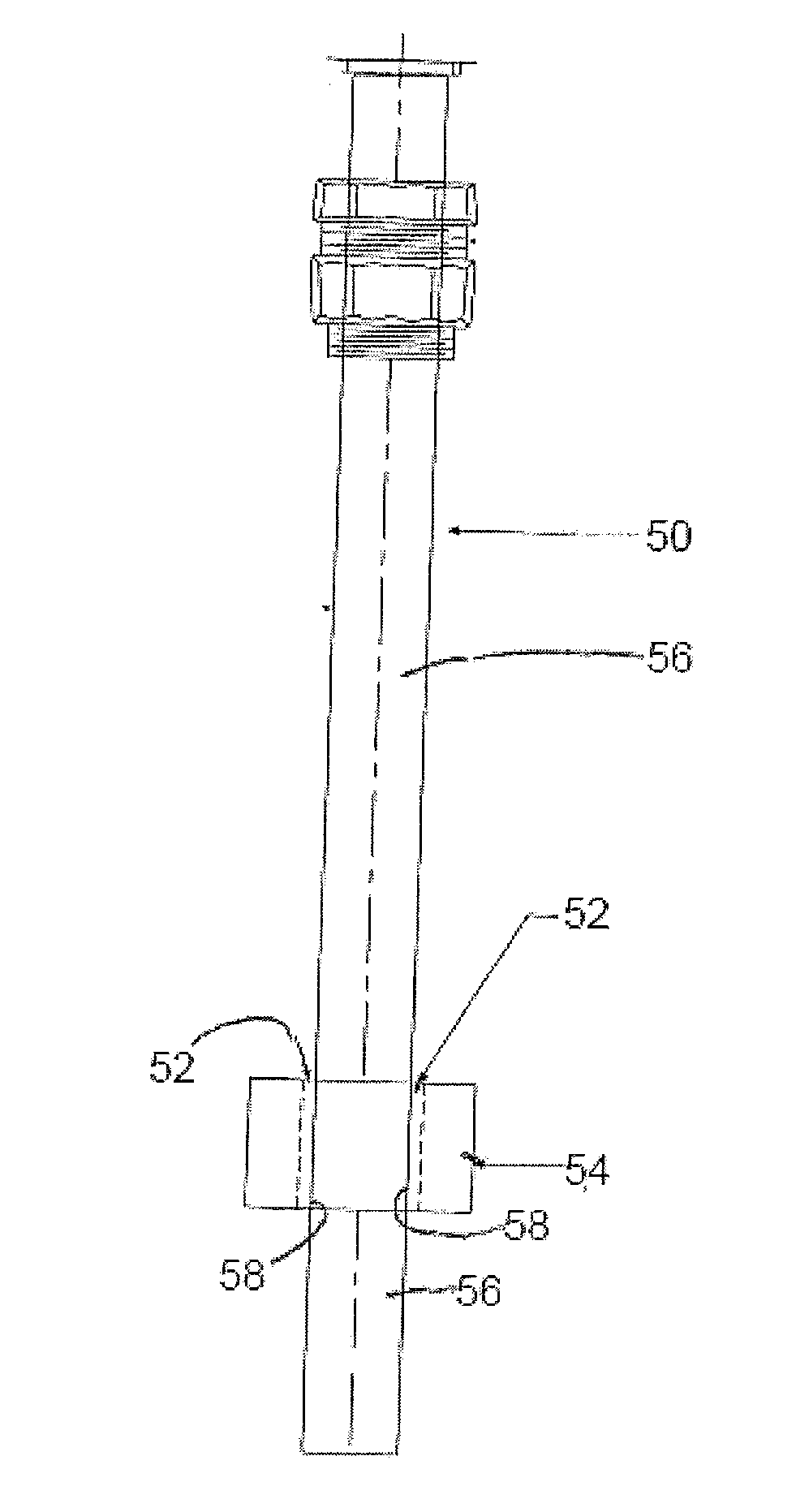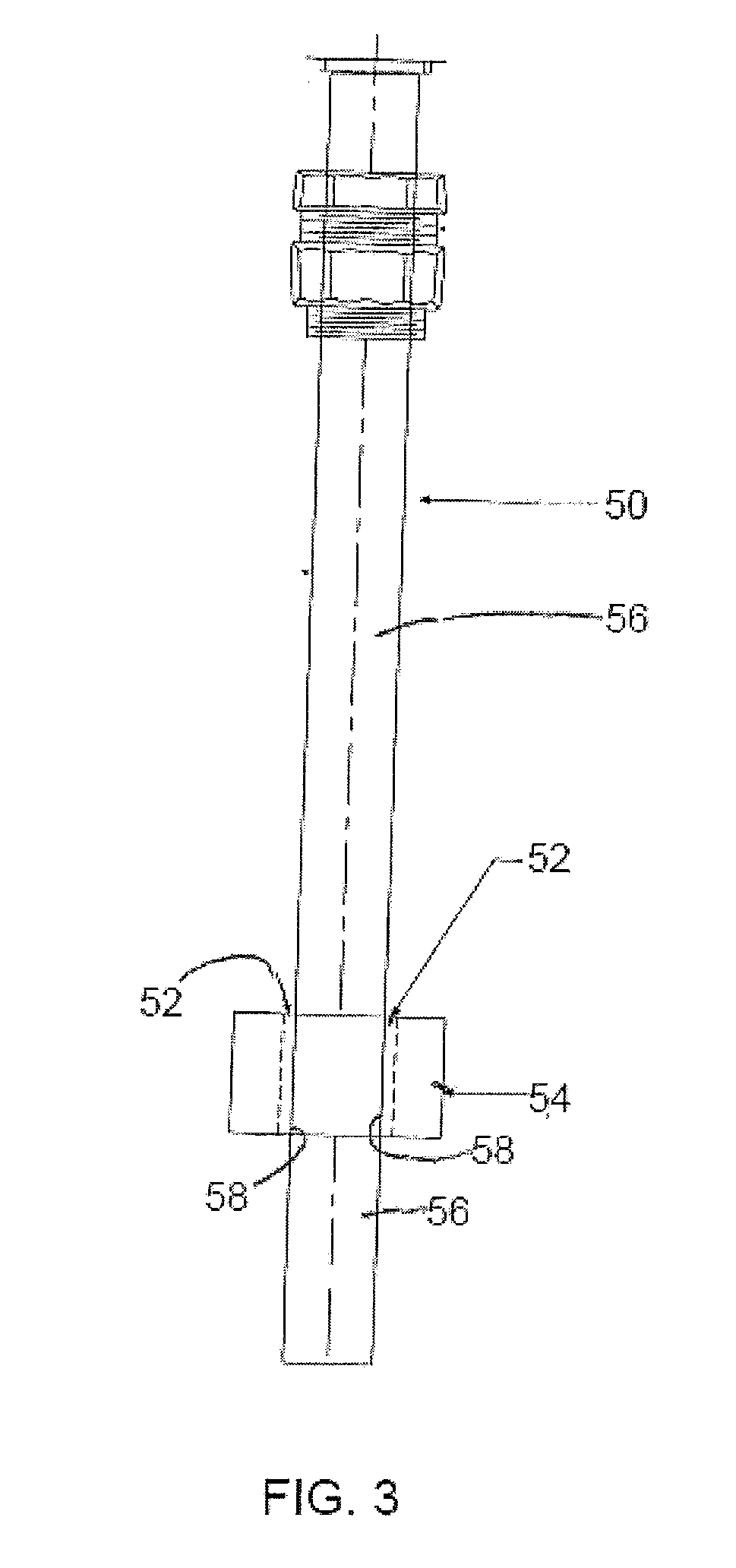Method and kit for treatment of components utilized in a crude oil service operation
a crude oil service operation and crude oil technology, applied in the field of paraffin and asphaltene deposition, can solve the problems of increasing the difficulty of paraffin wax treatment, increasing the fluid velocity, and increasing the likelihood of asphaltene deposition
- Summary
- Abstract
- Description
- Claims
- Application Information
AI Technical Summary
Benefits of technology
Problems solved by technology
Method used
Image
Examples
Embodiment Construction
[0028]The present invention to reduce paraffin / asphaltene deposition on stainless steel and nickel alloy components utilizes a composition known as a Self-Assembled Monolayer of Phosphonate (SAMP). SAMP is commercially available from a wide range of suppliers. One such supplier is Aculon, Inc., San Diego, Calif. Typically, SAMP is utilized with an alcohol-based carrier which allows for rapid drying. It is anticipated that the SAMP may be combined with a glycol carrier for use in the treatment of components used in crude oil service operation.
[0029]A monolayer is a nanoscale coating that is one molecule thick or 1-4 nanometers in thickness (1 nm=1×10−9 meters). A phosphonate is a phosphorous acid connected with a carbon-based group through a highly stable phosphorus carbon bond.
[0030]The phosphonic acid reacts with the component surface through stable metal phosphorus bonds, and the carbons are chosen for their non-stick chemical functionality. The SAMP is covalently bound to the sub...
PUM
| Property | Measurement | Unit |
|---|---|---|
| composition | aaaaa | aaaaa |
| temperature | aaaaa | aaaaa |
| cloud point | aaaaa | aaaaa |
Abstract
Description
Claims
Application Information
 Login to View More
Login to View More - R&D
- Intellectual Property
- Life Sciences
- Materials
- Tech Scout
- Unparalleled Data Quality
- Higher Quality Content
- 60% Fewer Hallucinations
Browse by: Latest US Patents, China's latest patents, Technical Efficacy Thesaurus, Application Domain, Technology Topic, Popular Technical Reports.
© 2025 PatSnap. All rights reserved.Legal|Privacy policy|Modern Slavery Act Transparency Statement|Sitemap|About US| Contact US: help@patsnap.com



